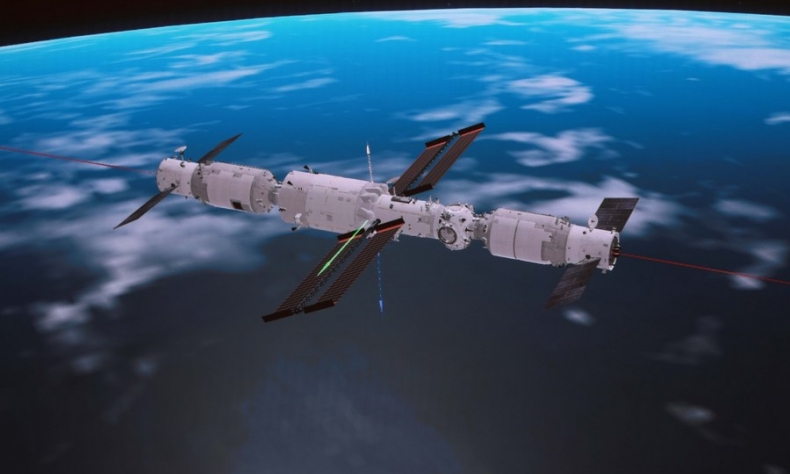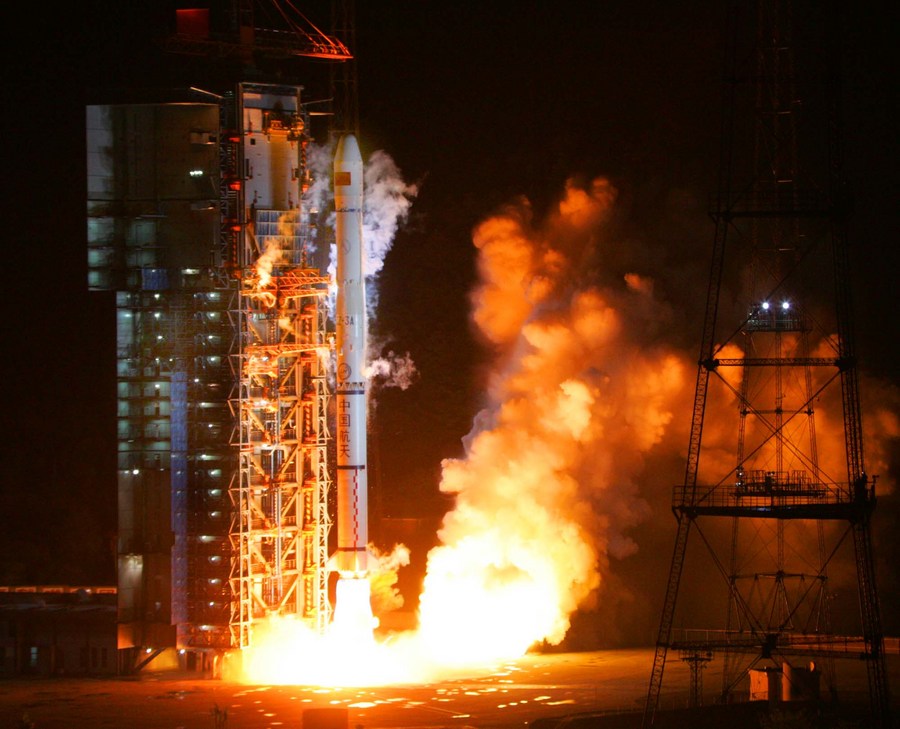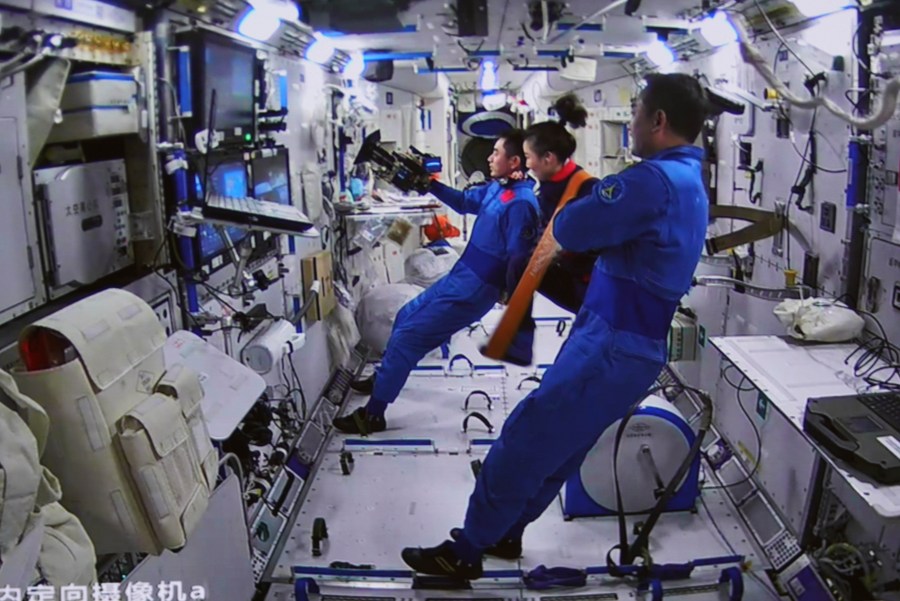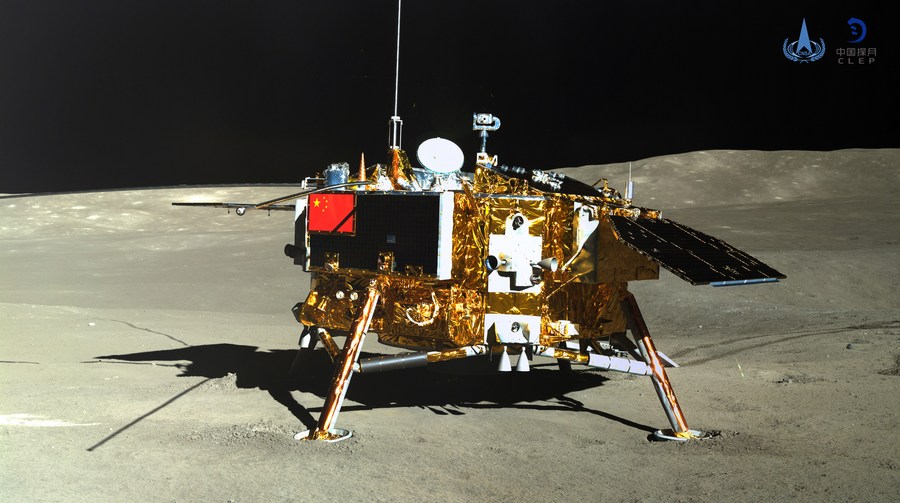Exploring the Outer Space

Thanks to a vast space program, China is heading towards a renewed understanding of the solar system, a giant step for all mankind.
Some milestones have been achieved in China’s space exploration recently. Chinese rover Zhurong, part of the country’s Tianwen-1 interplanetrary mission, alighted on Mars on May 15, 2021. Three Chinese astronauts returned to Earth in April after half a year’s stay at China’s new space station. And the cargo spacecraft Tianzhou-4 was successfully launched on May 10 to deliver supplies for China’s space station.
They are also the tip of a vanguardist and comprehensive national space program as China’s fifth white paper on its space activities released in January shows. These documents have been released almost every five years, starting in 2000. Besides science and technology, Chinese space exploration also encompasses world intellectual history, international space cooperation, and the impact on contemporary science and thought. Its significance goes well beyond a single country’s accomplishments.
Reach the limits
China’s most spectacular space goal is to reach the limits of the solar system. Last year, it sent an observation satellite towards the sun to collect data about the ultimate source of energy in our solar system. Understanding the structure of the sun and developing new technologies in meteorology and navigation is a priority for the solar satellite. The navigation goal for the country is to achieve 100 astronomical units, equivalent to 15 billion kilometers of travel in deep space by 2049, the 100th anniversary of the founding of the People’s Republic of China, according to Wu Weiren, chief designer of the China lunar exploration project.

China is also gearing up to launch the Einstein probe satellite – the satellite for space gravitational wave detection, which will include an advanced space-based solar observatory.
On Earth, it is building in the northwestern province of Qinghai what’s going to be the largest telescope in the northern hemisphere. This will advance the search for celestial bodies in the outer solar system for a better analysis of the structure of the Milky Way and better understanding of the concept of time. The Qinghai site will complement the world’s best astronomical sites in Chile; Hawaii in the United States; and the Canary Islands, Spain.
Javier Solana, arguably the most famous politician and physics professor in Europe, said at two different seminars recently that in the past year, more students had graduated in science subjects from China than from the United States and the rest of the world. This shows the potential for a high-quality Chinese space program in an era when we have realized that the cosmos offers endless energy and mineral resources.
In addition, what China is doing in international cooperation projects in this field is bound to have a significant impact. For example, in the development of agriculture, decontamination, as well as protection from the asteroids cyclically impacting our planet.

The past and the future
British sinologist and scientist Joseph Needham said that China’s theoretical and practical views stem from olden times, before modern astronomy. The old Chinese doctrine of infinite empty space differs from the perception of solid crystalline celestial spheres prevailing in medieval Europe. Later Western theories incorporated Chinese views and technology such as the development of the undulatory theory in 18th-century physics that regarded light as a wave-like motion filling all space.
Since ancient times, Chinese people has considered space as an interrelated part of life on Earth. Chinese astronomers carried out stellar observations during different dynasties, when medieval Europe envisioned Earth as a restricted, flat planet, and a mythologized heaven. Astronomy viewings were highly developed during the Han Dynasty (202 BC-AD 220), before Europe even existed.
In a recent article, “China: A Key Actor in the Fight Against Climate Change,” former French Foreign Minister Laurent Fabius, the driving force behind the Paris climate change negotiations, stressed that “Chinese ancestral wisdom promotes a fundamental balance between Heaven and Earth through the mediation of Man.”
Stanley Kubrick’s influential sci-fi film 2001: A Space Odyssey depicts a future in which scientists from antagonistic countries transcend the differences on Earth by working together in an international space station. They travel through interstellar space developing projects for the common benefit of mankind. It is an inspiration against scientific and intellectual decoupling, a challenge important to overcome today.

International cooperation projects
In 2019 China Manned Space Agency and the Office for Outer Space Affairs of the United Nations selected nine experiment international cooperation projects to conduct experiments on board China’s space station. Twenty-three institutions from 17member states of the UN have been involved in research areas such as life science, biotechnology, microgravity fluid physics, microgravity combustion, astronomy, and space technologies.
China has also sent three lunar exploration missions over the last two years to test key technologies for the International Lunar Research Station (ILRS), a long-term goal envisaged to be completed by 2035. Furthermore, according to Xinhua, the Chinag’e-4 mission, which accomplished the first-ever soft landing on the far side of the moon, has carried four payloads developed by Saudi Arabia, Sweden, Germany and the Netherlands. In 2021, China and Russia signed a memorandum of understanding to jointly develop the ILRS.
In contrast, U.S. legislators have prohibited NASA from cooperating with China, which does not contribute anything to a better scientific development.
In spite of that, Beijing is willing to conduct dialogue with the United States and other countries as well as international organizations on outer space governance. The next five years will witness China working together with countries such as Italy and Pakistan, as well as with BRICS countries, on satellite engineering and technology, according to the white paper published in January.
The current Chinese space program is supported by China’s unique capabilities and titanic efforts. This brings to mind the development of the first general-purpose Chinese computer, Model 107, led by Chinese engineer Xia Peisu, based on China’s own intellectual and scientific legacy, in 1960. That achievement made it possible for Beijing to send its first satellite into space in 1970, a major national achievement.
Half a century later, thanks to a vast space program, China is heading towards a renewed understanding of the solar system, a giant step for all mankind.
Augusto Soto is director of the Dialogue with China Project, an independent electronic platform.
 Facebook
Facebook
 Twitter
Twitter
 Linkedin
Linkedin
 Google +
Google +










